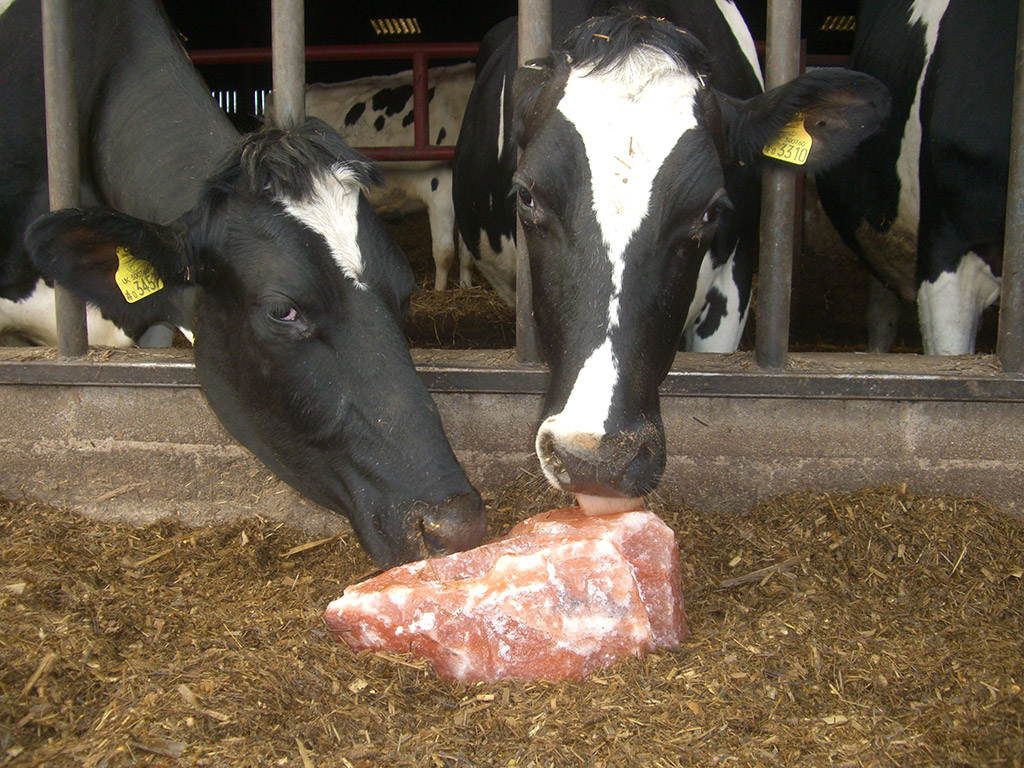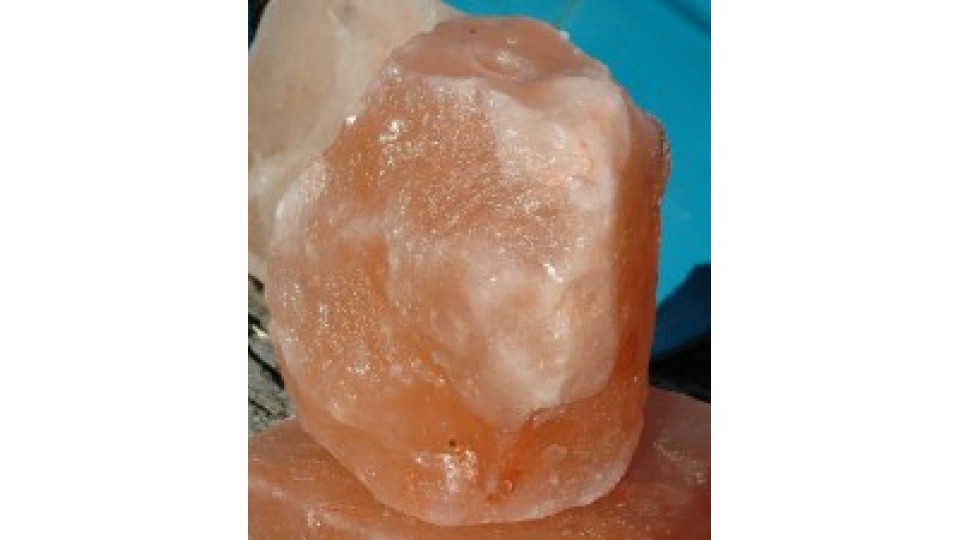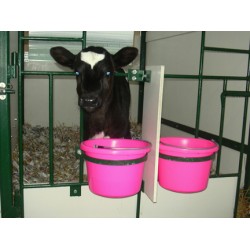SALT, why is it important in Cattle & Sheep feeding?
In my opinion there is too much talk (and marketing from big firms) about the little micronutrients like “chelated Chromium & protected Choline” etc!
It is important to get the big things right first, e.g. Water, Appetite, Energy, Protein, Fibre and the so called MACRO MINERALS, these are Calcium, Phosphorus, Magnesium, Sodium, Potassium, Chloride & Sulphur.
I have already written articles on Calcium, Phosphorus & Energy and they can be read by clicking on the links. “Plodding animals” on diverse pasture probably naturally can get their own requirements, but a Ewe feeding twins, a 40L Dairy Cow and cattle growing fast need their diet looking at to achieve the good level of production and their good health.
So, today I’ll give you my views on why it is important to not forget about a basic & essential requirement of livestock, that is SALT.

WHAT IS “SALT”?
Common salt, table salt, sea salt or Sodium Chloride is what we are talking about. Salt is 40% Sodium and 60% Chloride.
Salt is originally from the Sea and either is usually from naturally evaporated salty water. In the UK it is often dissolved from underground deposits, then evaporated on the surface. “Rock Salt” is literally ROCK formed from evaporation of ancient sea water plus enormous pressure from rock forming above it by sedimentation over millions of years.
Q. WHAT DOES SALT DO IN THE BODY?
A. EVERYTHING !
Salt cannot be made by the body.
Salt is not stored in the body, so salt intake is needed regularly
TOO LITTLE SALT CAUSES :-
- In moderation, reduced production and reducing any profit you might have made!! Poor appetite, reduced growth and low milk yield occur.
- Severe deficiency can cause seizures and death!
TOO MUCH = SALT POISONING, while rare in the UK, can occur if higher salt is fed without free access to good drinking water, or if salt contaminates the drinking water:-
- Gut problems progress to the same things as deficiency, i.e. convulsions and death!
- We looked at this when designing our RehydroGEL calf electrolyte. It is lower Sodium that other similar products, so it can be mixed with whey-based calf milk replacers which could have higher salt content.
So, it is important to ensure enough salt is fed, that the salt is mixed throughout the feed and that drinking water is good and freely available.
Salt is so important to life that salt has its own “appetite” and animals will seek it out if needed. Deficiency of salt often shows as licking objects, the ground, other animals and drinking urine.
Salt has been precious throughout evolution, so it is well absorbed from the diet and there are strong mechanisms to keep it in the body by reabsorbing it back from urine and faeces.
SALT , SODIUM AND/ OR CHLORIDES FUNCTIONS IN THE BODY include:-
- Fluid balance and pH or Acid Base. This what we are talking about when we say “Electrolytes”, Sodium & Chloride are important electrolytes that can get out of balance in calf diarrhoea, water deprivation, exercise and heat stress.
- Maintains blood pressure and blood volume
- Nerve function
- Muscle function
- Stomach Hydrochloric Acid production – so is important for “post-rumen” digestion.
- Saliva “Bicarb of Soda” needs Sodium from Salt- so is important for buffering the rumen and avoiding acidosis and looking after the rumen bugs.
WHAT DO WE DO ABOUT SALT THEN ON OUR FARMS ?
So, in the UK we are usually supplementing salt to our cattle and sheep, because forage & grains commonly do not provide enough salt for a good level of production.
Some forage species are well known to not take up sodium from the soil even if present in adequate amounts. These include maize, lucerne, and is also low in wheat grain, peas & cereal straw?
Distillers Grains, Fodder Beet, Kale & Turnips can have decent salt levels.
Feeds with HIGH salt or sodium content, and so potentially risky are Whey, Bakery Waste, Crisps & Soda Grain / Caustic Wheat.
Salt as Sodium & Chloride are found in forage because it is taken up by plants as they grow. However, salt can leach from soils and the amount in the soil can vary depending on farm location. A coastal farm will have more salt in the soil due to higher levels in rain from the “salt-air”, whereas an inland farm is more likely to be sodium deficient. Areas with high rainfall may be more prone to sodium leaching from soils.
For example and approximately- IF your grass has 0.15% salt in its Dry Matter and if you have-
- Dairy Cows or Good Ewes with twin lambs, then they probably need 0.5% or more
- Suckler Cows with Calves probably need 0.25%
- The recommendations on my latest soil test says “0.15% Sodium or 0.45% Salt on a DM basis is required in the diet of grazing livestock and can improve the palatability of grass.” Also, it says “Herbage analysis is useful to assess the sodium status of grass and its balance with Potassium, action being recommended if herbage Sodium is below 0.15% DM or the K:Na ratio is higher that 20:1.
So, without getting too technical, supplementing salt is usually a good idea. If Salt is provided enough to satisfy sodium needs, then Chloride will be satisfied also. Sodium Bicarb and Caustic Soda do not provide any Chloride.
Salt is usually added to concentrates, and TMR, plus access to lump rock salt so the animal can do the fine tuning itself.
The “seasoning” effect of salt in the TMR, and also grass, will also increase food intake, so vital in high yielding animals. Even your fish & chips are a bit boring without salt on them!
Grazing Beef, sheep & replacement cattle usually need Rock Salt blocks , or salt is used to promote intake of other free access minerals or lick-blocks.
Salt availability can also reduce Hypo-Mag or Grass staggers as it reduces the Magnesium lowering effect of Potassium.
TMR, Borehole water and weird feed ingredients might need a Nutritionist to check what needs to be done for salt supplementation.
A nutritionist’s advice on dairy DRY cow ration is also important as Salt influences the important “DCAD” status of the dry cow ration and what effects it might have on Milk Fever. Excess salt can result in problems with Udder Oedema around calving.
Always provide good quality drinking water, so if in doubt, get it tested. There are recommended limits on dissolved salts in drinking water for different livestock.
Common Salt Supplements :-
- Lump Rock Salt , can be red or white, the Red might have more minerals. It’s handy as it is more rain resistant than manufactured blocks, but should be stored in a dry place.
- Pure Dried Vacuum Salt (PDV) is commonly added to Concentrates and TMR
- Sodium Bicarbonate, if used in dairy rations or “Soda Grain / Caustic Wheat” will supplement Sodium, but not Chloride, so there is an upper level for its inclusion & “Salt” may still be needed. A Nutritionist is needed.
- Bagged Minerals, depending on their formulation
- Mineralised Salt Blocks
- Lick Buckets etc.
- Salt can be spread on the pasture to improve palatability and sometimes the soil chemistry. It is included in some natural and manufactured fertilisers.
Conclusion:
Salt is essential and usually needs supplementing to productive cattle & sheep.
Nutritional advice should be sought if there is any doubt.
G Shepherd Animal Health supplies Red Rock Salt lumps in totes from 250kg to 1.2T sizes.






